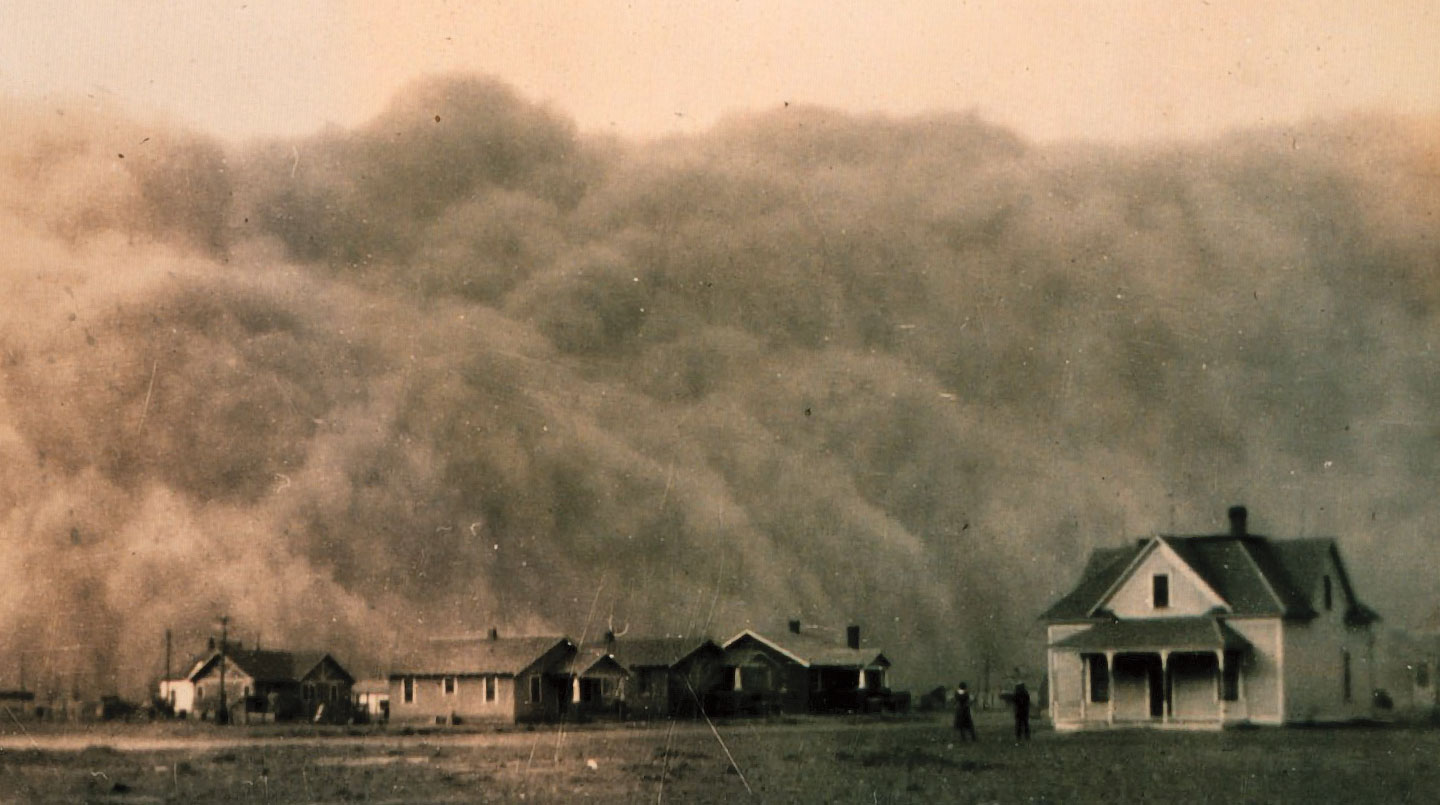Courtesy of Hattrup Family
Catherine Hattrup survived the Black Sunday storm.
Catherine Hattrup believed she was going to die. It was Sunday, April 14, 1935, and Catherine, 9, was enjoying a quiet afternoon at her grandmother’s house in Hodgeman County, Kansas.
The day started out beautiful, with a clear blue sky and a soft breeze blowing through the air. But suddenly, Catherine’s grandmother rushed inside the house. “There’s a terrible black cloud!” she cried. “And I have no idea what it is!”
For hundreds of miles around, people stared up at the same horrifying sight: a mountain of churning blackness racing through the sky. Was a violent thunderstorm closing in? Was a massive tornado about to strike?
No. It was a dust storm—the biggest in United States history.
Catherine Hattrup believed she was going to die. It was Sunday, April 14, 1935. Catherine, 9, was enjoying a quiet afternoon at her grandmother’s house in Hodgeman County, Kansas.
The day started out beautiful. The sky was a clear blue. A soft breeze was blowing through the air. Suddenly, Catherine’s grandmother rushed inside the house. “There’s a terrible black cloud!” she cried. “And I have no idea what it is!”
For hundreds of miles around, people stared up at the same horrifying sight. A mountain of churning blackness was racing through the sky. Was a violent thunderstorm closing in? Was a massive tornado about to strike?
No. It was a dust storm. It was the biggest in United States history.

